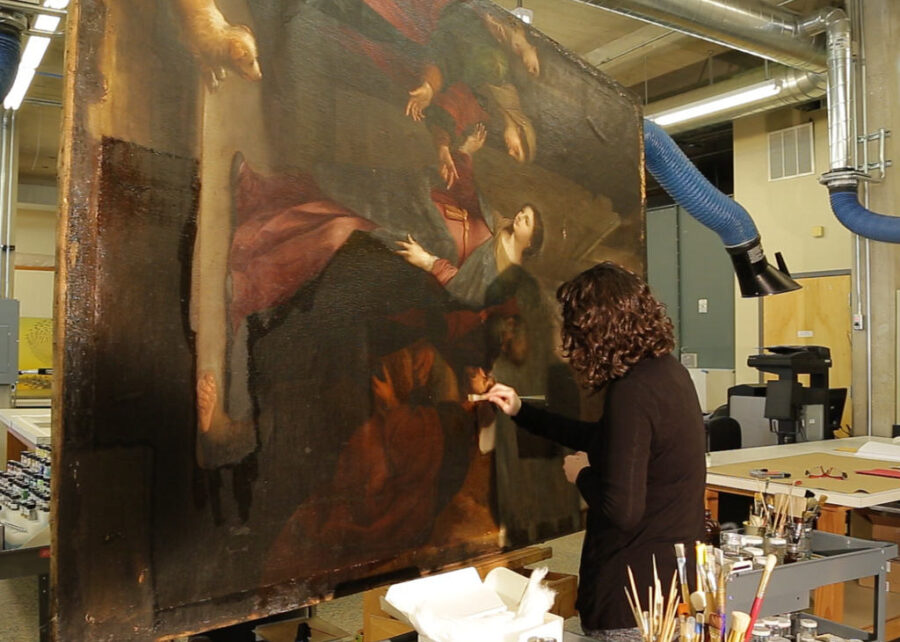In an age defined by rapid technological advancements, the field of art conservation is evolving dramatically. As custodians of our cultural heritage, conservators are increasingly leveraging digital tools and methods to safeguard artworks against the ravages of time and environmental degradation. Digitization has emerged as a transformative force in this discipline, enabling the preservation of art not just for today but for generations to come. By integrating technology into conservation practices, we can expand access to the world’s artistic treasures while enhancing our understanding of their historical and cultural significance.
The Promise of Digitization in Art Preservation
At its core, digitization involves converting physical artworks into digital formats, creating high-quality archives that preserve intricate details and nuances of the originals. This process protects against deterioration and loss caused by environmental factors such as light exposure, humidity, and temperature fluctuations. More than a mere backup, digitization enables conservators to build a comprehensive digital library that documents each artwork’s condition, context, and history. As museums and galleries worldwide increasingly embrace digitization, they are not only ensuring the longevity of these pieces but also enhancing their accessibility for a global audience.
Advanced Imaging Techniques in Conservation
The digitization of art relies heavily on advanced imaging techniques that capture the essence of each piece with remarkable precision. Tools like 3D scanning, infrared reflectography, and high-resolution photography allow conservators to document the intricate features of artworks, from texture and color to size and material composition. These technologies provide invaluable insights into an artwork’s condition, revealing underlying sketches, damage, or previous restorations. This meticulous documentation aids in restoration efforts, supports academic research, and enriches public exhibitions. Digital archives offer scholars and enthusiasts the opportunity to explore artworks in detail, fostering a deeper appreciation and understanding of the artist’s intentions and techniques.
Expanding Accessibility Through Digital Archives
One of the most significant impacts of digitization is its ability to democratize access to art. Virtual exhibitions and online collections are breaking down geographical barriers, allowing people from all walks of life to engage with artworks that they might never have the chance to see in person. This shift is especially crucial in a world where cultural institutions face challenges related to funding and visitor engagement. By harnessing digital platforms, museums can reach broader audiences, providing educational resources and interactive experiences that connect viewers with art on a more personal level.
Virtual reality (VR) and augmented reality (AR) are also revolutionizing the way people experience art. By immersing viewers in a digital space, these technologies offer an interactive way to explore historic masterpieces and ancient artifacts. This enhanced engagement fosters a deeper appreciation for art and ensures that cultural heritage remains relevant in the digital era.
Challenges of Digital Preservation
Despite the myriad benefits of digitization, the integration of technology into art conservation presents several challenges. Chief among these is the risk of digital obsolescence. As technology evolves, older formats and storage methods may become inaccessible, raising concerns about the longevity of digital archives. Robust strategies for long-term storage, including cloud computing and redundant backups, are essential to mitigate the risks of data loss and ensure that these valuable records remain intact for future generations.
Another concern is the cost of digitization. High-quality imaging equipment, software, and storage solutions require significant investment. Smaller institutions may struggle to implement comprehensive digitization initiatives due to limited resources, making collaboration between larger and smaller organizations crucial in expanding preservation efforts.
Balancing Preservation and Artistic Integrity
Another critical consideration in the digitization process is balancing the preservation of original artworks with the adaptation to digital formats. While digitization offers new avenues for engagement, it is vital to ensure that the artist’s vision is respected and preserved. Conservators must approach the digitization process with sensitivity, carefully considering how to represent the physical artwork in a digital space without diminishing its artistic and emotional impact. This requires ongoing dialogue between conservators, artists, and the institutions involved, ensuring that all parties are aligned in their goals for preservation and representation.
The Future of Art Conservation: A Digital Renaissance
As the field of art conservation continues to evolve, the fusion of technology and traditional methods holds great promise for enhancing our understanding and appreciation of cultural heritage. The innovations brought about by digitization are not merely tools for preservation; they are gateways to deeper engagement with art. By harnessing the power of technology, conservators can create dynamic and interactive experiences that resonate with a diverse audience, fostering a greater appreciation for the arts in a world increasingly defined by digital interaction.
A New Era of Preservation
The embrace of digitization in art conservation is but one part of a new era of preservation, one that honors the past while looking toward the future. By merging technological advancements with traditional conservation practices, we can safeguard our artistic heritage against the ravages of time and make it accessible to a broader audience. Through thoughtful integration of technology, we can ensure that the stories, emotions, and cultural significance embedded in these artworks continue to inspire and educate for years to come.









